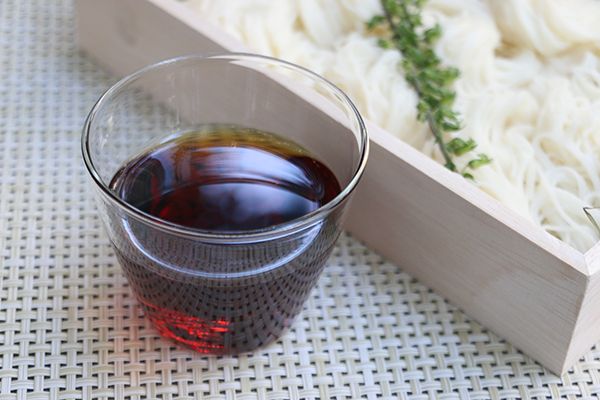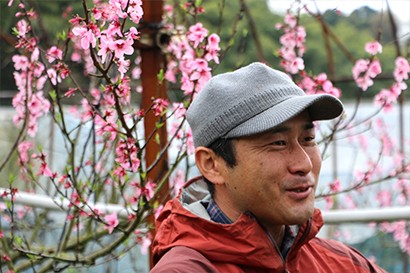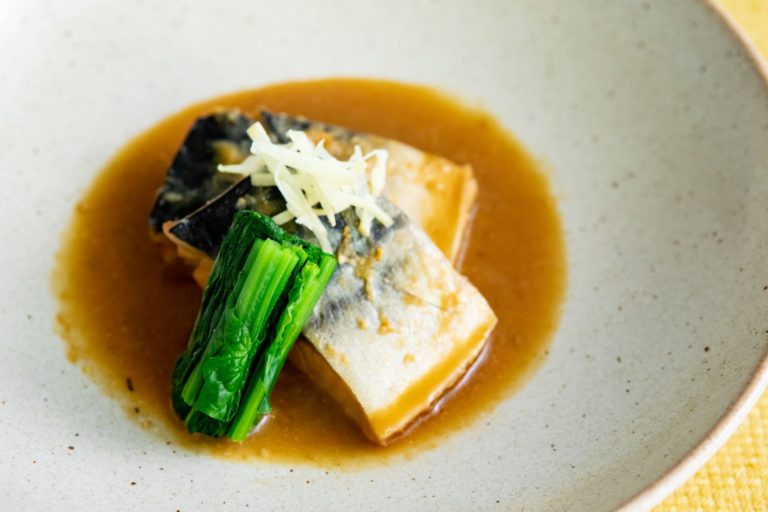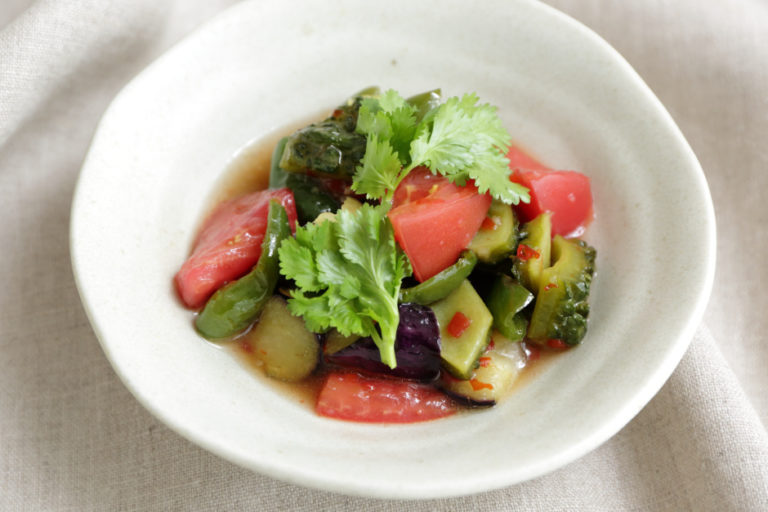Say goodbye to summer with nagashi somen
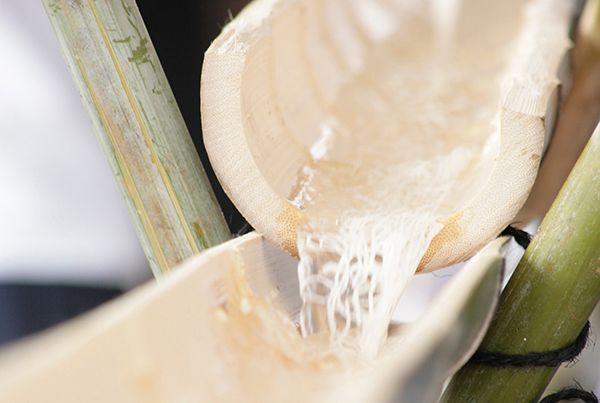
Summer is drawing to a close and autumn is almost upon us. For many Japanese, there is still time to enjoy the last days of summer at the beach or riverside before the weather turns cooler.
To celebrate the end of summer, the SHUN GATE Editorial Department visited Cafe de Rope La mer, located on the stunning Isshiki Kaigan coastline at Hayama in Kanagawa Prefecture, to try a special noodle dish known as nagashi somen.
Nagashi somen – a feast for the senses

Japan has a longstanding culinary tradition of presenting food as a celebration of all the senses, and nagashi somen is surely the epitome of this. Everything about this refreshing and cooling dish evokes the essence of summer in Japan.
Nagashi somen involves somen noodles being carried by a stream of running water down a long section of bamboo pipe. Chopsticks are used to pick the noodles out as they flow down the pipe. The noodles are then dunked in mentsuyu dipping sauce and eaten cold. There are many theories about the origins of nagashi somen. It is said that during the Edo period there was a particular section of Naha Bay in the kingdom of Ryukyu (present-day Okinawa) where the highlight of summer festivities was nagashi somen sent down from the cliff top on a stream of crystal-clear water. This would suggest that nagashi somen has been a feature of summer in Japan for hundreds of years.
At our nagashi somen event,a special mentsuyu dipping saucehas been prepared from the finest regional ingredients from various parts of Japan. The sauce is complemented with eight carefully selected condiments sourced from around the country, all of which are designed to enhance the experience by providing a burst of color along with additional flavor and texture. Naturally, the selected condiments are all in season, and visitors are free to add as much of them to the sauce as they would like to suit their tastes. Let’s look at each one in turn.
Condiments for nagashi somen
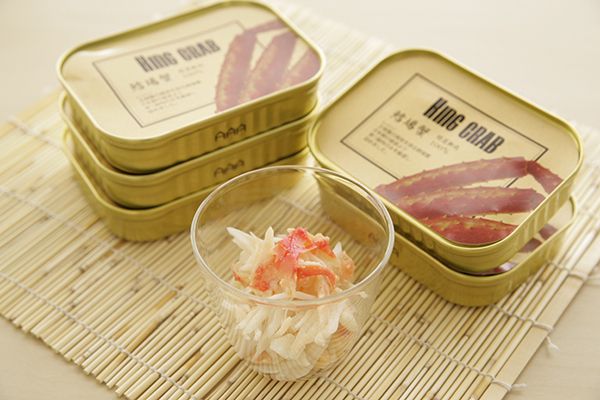
■ Japanese king crab (Maruha Nichiro : http://www.maruha-nichiro.co.jp/index2.html)
The harvest season for the Japanese king crab is relatively short. This canned delicacy uses only the leg, the thickest and tastiest part of the crab.
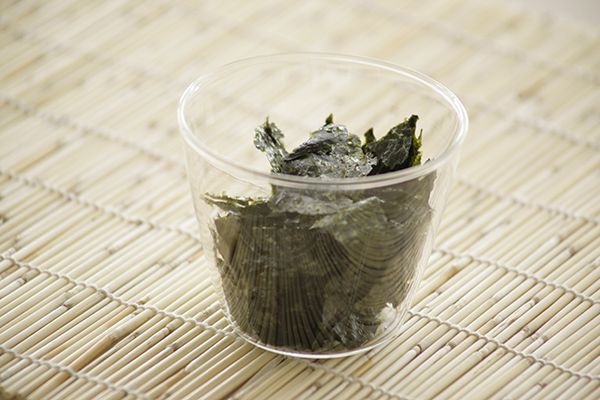
■ Mominori seaweed (Yamamoto Noriten : http://www.yamamoto-noriten.co.jp/)
One of the most popular uses of nori seaweed is as an addition to somen noodles, because it enhances the noodles with the scent of the sea.
Nori provides a perfect balance of dietary fiber, minerals and proteins.
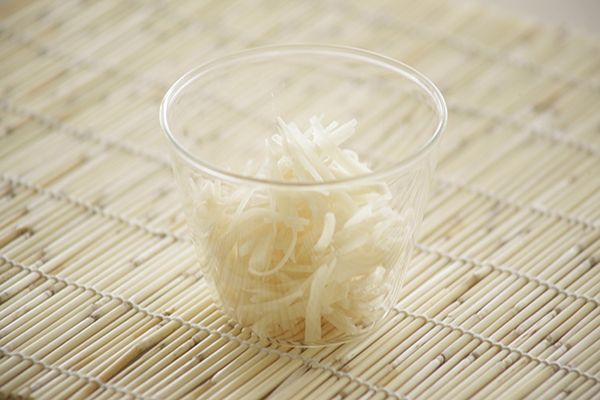
■ New season ginger from Kochi Prefecture
New season ginger, available from June through August, is the new root section that sprouts from the mature ginger root. It is the finest form of ginger available, characterized by softer fiber and a wonderfully spicy and refreshing taste.
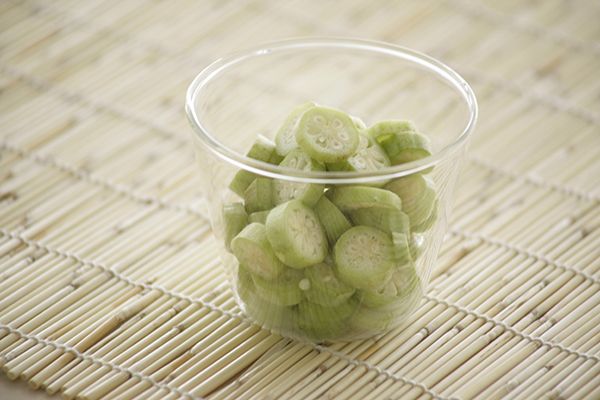
■ White okura from Amakusa, Kumamoto Prefecture
White okura, a special form of the popular summer vegetable, has smoother skin than the standard green okura. It is less bitter and tends to be stickier inside. White okura remains soft and edible in raw form even when fully grown.
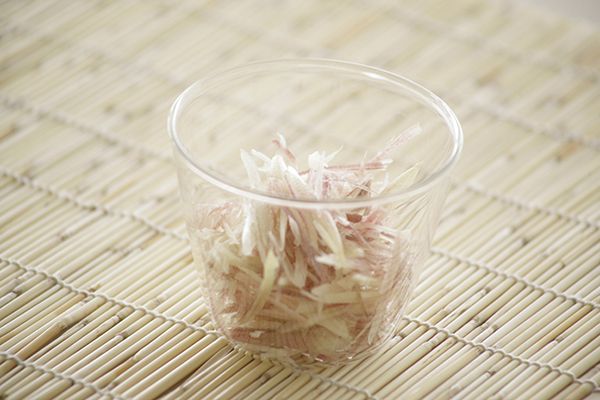
■ Myoga (Japanese ginger) from Kochi Prefecture
Myoga has a distinctive aroma and is quite sharp and spicy. It is classified as either summer myoga or autumn myoga depending on the harvest season. A beautiful pale crimson in color, myoga is sliced thinly to use as a condiment that adds a nice touch to the dipping sauce.
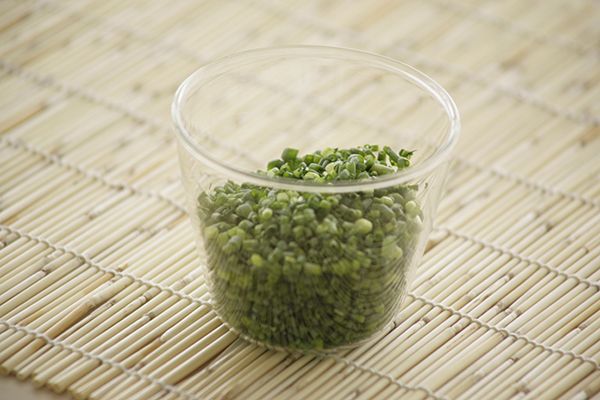
■ Early-harvest spring onions from Oita Prefecture
Very young spring onions, which are considerably thinner than the ordinary version, are a staple condiment in Japan. Here we see the Oita Ajiichi variety from Oita Prefecture in Kyushu.
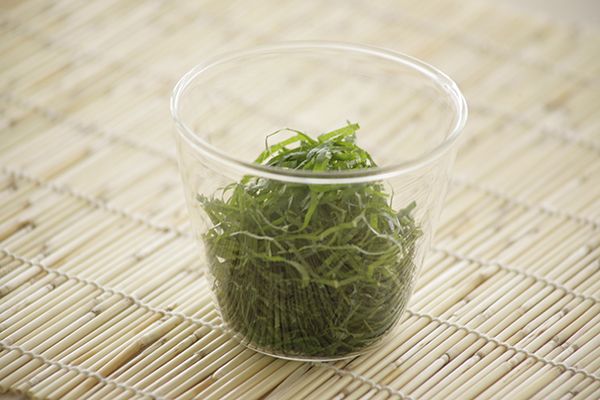
■ Shiso (beefsteak plant) from Aichi Prefecture
Shiso is another common summer vegetable and popular condiment in Japan.
It is in season from summer through to autumn. Rich in nutrients, shiso has a distinctive refreshing aroma that stimulates the appetite in summer.

■ Virgin wood cultivated dried shiitake boiled in soy (OSK : http://osk-shiitake.com/)
The shiitake mushrooms used to prepare the dipping sauce can also be served as a condiment,
boiled in soy sauce and mirin to provide the perfect complement to the somen noodles.
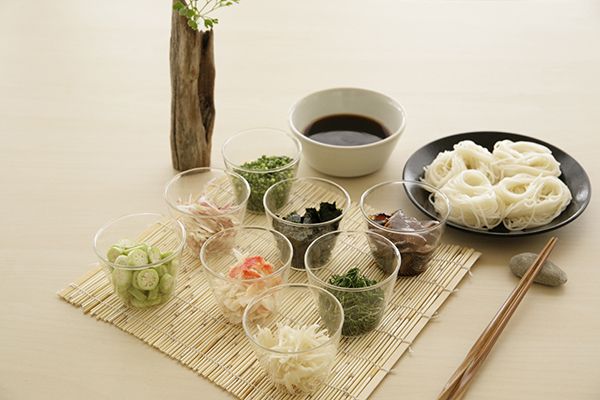
The canned Japanese king crab proved to be one of the most popular condiments on the day, praised by both locals and foreign visitors alike. The crab was the perfect match to the fragrant mentsuyu dipping sauce, which was made mainly from marine products.
This winter, the SHUN GATE Editorial Department will be in Wakkanai,
Hokkaido, visiting a food producer who employs advanced Japanese technology to make canned crab meat that provides the seasonal flavor and goodness of fresh crab to discerning consumers around the world throughout the year. We will examine their advanced world-leading canning lines and speak with some of the key staff involved in this exciting venture.
See you next time!

